Portuguese Beverages: Basic Overview
Common Ingredients
Common Preparing Methods
Key Taste
Drinking Etiquette
Culinary Festivals
Influence and Fusion
Classifications of Portuguese Beverages
-
Alcoholic
Popular Portuguese alcoholic beverages include wines, beers, spirits, and cocktails.
Portuguese wines are especially popular and available in many varieties.
American alcoholic beverages are typically made from fruits, especially grapes and sour cherries.
-
Non-Alcoholic
Portuguese soft beverages come in many different choices, especially tea, coffee, and soft drinks.
Portuguese people often serve alcoholic beverages warm or with ice.
Many local alcohol-free beverages are sweetened and flavored with extra ingredients, such as spices and fruit juices.
Portuguese beverages are popular drinks in Portugal. While this Southern European country is world-famous for its wine offerings, there are many other alcoholic and non-alcoholic beverages worth discovering.
The wine-making tradition of Portugal is rooted in the country’s ancient past and favorable terroir and climate conditions. Many Portuguese wines have a strong presence throughout the world.
Various beverages in Portugal are strongly influenced by culinary interactions with Spain and the Americas. The country’s seafaring history plays a considerable role in their development.
Let’s start learning about Portuguese beverages with a breakdown of Portugal’s traditional drinking culture and the global popularity of local beverages.
Next, I will provide many interesting facts about the 15 most well-known beverages in Portugal as well as the general features of Portuguese drinks.
15 Popular Portuguese Beverages
You are just a few clicks away from uncovering the most popular 15 Portuguese beverages. To navigate this section more easily, use advanced filters that can help you sort my suggested drinks in terms of popularity, ingredients, tastes, and preparation methods.
I also provide filters classified according to traditional, national, and street beverage labels. Use them to make your experience smoother.
Port Wine
- Alcoholic
- National
- Traditional
Port wine, or port for short, is a world-renowned Portuguese fortified wine. It is named after Porto, Portugal’s second-largest city.
Port wine is produced with grapes cultivated in the Douro Valley, a famous wine region in northern Portugal as well as one of the world’s oldest.
To make port wine, people rely on aguardente, an alcoholic spirit distilled from grape wine used to fortify wines or make cocktails in Portugal. The preparation of port wine involves adding aguardente to a wine base during fermentation to halt the process and leave residual sugar.
Port wine has higher alcohol content and more complex flavors than other types of fortified wines. Its taste resembles the sweetness of ripe berries enhanced with the nuttiness and bitterness of chocolate and caramel.
The most popular variety is ruby port, which is derived from red grapes and has a deep ruby hue and fruity flavor. This type of port wine can be categorized into common, reserve (premium), and rosé port.
Other types are white port (made from white grapes), vintage port (aged in large wooden vats and later in bottles), and tawny port (amber-hued, can be a blend of vintages, and matured in small casks).
Port wine is an ideal accompaniment to savory yet lightly seasoned dishes and sweet desserts, including cheese, pudim Abade de Priscos, and ovos moles.
Vinho Verde
- Alcoholic
- Traditional
Vinho verde is a Portuguese wine hailing from the region of the same name in the north. This region has been producing fine wines for around 2000 years and derived its name from its year-round green foliage and fertile soil.
Although vinho verde literally means “green wine” or “young wine,” it comes in white, red, and rosádo (rosé) forms. This Portuguese wine is known for its crisp, fizzy, fruity, and floral qualities, not to mention its very affordable prices.
Vinho verde is quite light, containing about 8.5 % to 14% alcohol. Portuguese people like to enjoy chilled vinho verde in summer, savoring its crisp taste and bubbly sensation.
Seafood dishes go terrifically with vinho verde, so enjoy it alongside dishes like sardinha assada, amêijoas à Bulhão Pato, peixinhos da horta, and cataplana de marisco.
Super Bock Beer
- Alcoholic
- Traditional
Super Bock Beer is a famous pale lager, widely considered as the most-loved Portuguese beer brand in the world. It was first brewed in 1927 by the Unicer Brewery, which is located in Porto.
Super Bock Beer boasts a crisp taste, creamy foam, deep gold appearance, and a pleasant balance of maltiness and hop bitterness. Its alcohol content is around 5.2%, and there are gluten-free and alcohol-free varieties.
The winner of numerous international accolades, Super Bock Beer is sold in more than 50 countries. This beer makes an ideal choice for casual dishes like francesinha, bifana, and frango assado.
Sangria
- Alcoholic
- Traditional
Sangria, “bloodletting,” is a beloved punch drink in Portugal and Spain. In 2014, EU lawmakers passed a labeling law dictating that true sangria can only come from these two Iberian nations.
Like its Spanish cousin, the Portuguese version of sangria consists of regional red wine, local fruits, and a sweetener as the base. This mixed beverage can be sweet, tart, or a mix of both, depending on the ingredients.
Therefore, sangria is a flexible drink that can cater to any palate. While the classic version boasts a ruby red hue, the white variation, known as sangria blanca and made with white wine, often presents a lighter color with shades of gold.
Another version is ponche de sangria, a kid-friendly beverage that replaces alcoholic ingredients with a soft drink.
Sangria is an ideal match for a wide range of savory dishes, especially snacks and appetizers like sardinha assada and peixinhos da horta.
Madeira Wine
- Alcoholic
- National
- Traditional
Madeira wine is a famous Portuguese fortified wine hailing from the island of Madeira. Its history dates back to the 15th century, when Madeira was a crucial port for trading ships traveling between Europe and distant lands.
Many ships transported wines, which dramatically changed their flavors for the better due to exposure to high heat and movement during the long voyages. Madeira winemakers eventually discovered the phenomenon and exploited it to develop a new winemaking method.
Madeira wine was born out of this ingenious process. This wine can be aged for a long time, with colors varying from pale gold to rich amber.
The grapes used for making Madeira wine need to be picked earlier, meaning that they are more acidic than typical wine grapes. This fortified wine has high acidity levels and a slight sweetness, with distinctive caramel-like flavor and smoky and nutty notes.
With approximately 18 – 20% ABV, Madeira wine pairs well with many dishes, from savory ones (cozido à Portuguesa and espetada) to sweet desserts (pudim Abade de Priscos). A cheap version of Madeira wine used solely for cooking is also available.
Ginjinha
- Alcoholic
- National
- Traditional
Ginjinha, or ginja for short, is a Portuguese liquor made from sour cherries. These fruits are known as ginja berries in Portugal and Morello cherries in other countries.
This cherry-flavored liquor first appeared around the early 17th century, created by a Gacilian monk in Lisbon who tried infusing the berries in Aguardente and spices. The resulting beverage was an instant success and has been a Portuguese favorite ever since.
Besides having fruity notes and dark red color from sour cherries, ginjinha also boasts a nice floral fragrance coming from cinnamon. Locals often serve this liquor with fermented, unpitted cherries at the bottom of the glass, a method known as “com elas.”
However, feel free to ask your bartender for a “com fruta” drink (ginjinha without the cherries). Both versions go well with various dishes, especially sweet treats like torta de Azeitão and bola de Berlim.
This liquor cherry-flavored liquor is about 18 – 24 % alcohol and should be enjoyed in small sips. Interestingly, inhabitants in the town of Óbidos may serve ginjinha in small, edible chocolate cups.
Licor Beirão
- Alcoholic
- National
- Traditional
Licor Beirão, also known as Beirão, is a Portuguese liqueur that was created in the 19th century as a remedy for stomach ache. It originated in the Beirã region in the country’s north-central region, hence the name: Beirão means“from Beirão.”
Beirão is a fairly sweet double-distilled liquor with 22% ABV. Its recipe is a well-kept secret, but the liqueur has the aromas of various spices and herbs, like lavender, cardamom, and cinnamon.
Outside Portugal, you can find licor Beirão in countries like Brazil, Sri Lanka, and India.
At Portuguese bars, bartenders use Beirão in many cocktails, specifically caipirão (the Portuguese variation of caipirinha) and sangria.
Portuguese people often consume Beirão as a digestif after a hearty or pair it with pastries like pastel de nata and pão de ló.
Medronho
- Alcoholic
- Traditional
Medronho, fully known as aguardente de Medronhos, is a traditional fruit brandy hailing from the rural regions of Portugal. It is made by distilling the fermented sour cherries.
In the past, sour cherries only grew in the wild and were picked solely by farmers who brewed their own brandy, so aguardente de Medronhos wasn’t easy to find. With the arrival of modern technology, however, this strong beverage is accessible to everyone.
Since the alcohol content of Medronho ranges between 40% and 50% (roughly the same as vodka), you should drink it in shot-glass portions.
Medronho boasts a crystal-clear appearance, a smooth texture, and a robust flavor. You can drink it neat or chilled and serve it alongside flavorful dishes like espetada and polvo à lagareiro.
Poncha
- Alcoholic
- Traditional
Poncha is a famous Portuguese cocktail hailing from Madeira. It consists of aguardente de cana (a local sugarcane spirit, more commonly known as Madeira rum), honey, sugar, and lemon or orange juice.
Some say poncha dates back to the 19th century when Madeiran fishermen created the drink to ward off colds during their long voyages at sea. Others think that poncha was born out of the Age of Exploration, as sailors brought it with them while going exploring.
Yet another story says that the punch drink brought from India inspired poncha. Anyway, while this Portuguese punch-like beverage is pleasantly sweet and tangy, it is still highly alcoholic and should be enjoyed with plenty of ice.
Portuguese people consider poncha a great flu cure, and they usually drink it when having cold symptoms. They also send poncha as a gift to tourists as a sign of hospitality.
Poncha has inspired a variety of regional adaptations, with additional ingredients like passion fruit (“maracujá” in Portuguese), tangerines, and even tomatoes. Locals often use a wooden muddler called mexelote to mix the drink.
In terms of accompaniments, casual or seafood dishes, like cataplana de marisco, amêijoas à Bulhão Pato, and sardinha assada, pair beautifully with poncha.
Licor de Amêndoa Amarga
- Alcoholic
- National
- Traditional
Licor de amêndoa amarga, literally bitter almond liqueur, is a popular Portuguese beverage made from bitter almonds. It is a specialty of Algarve, Portugal’s southernmost region.
While bitter almonds contain a dangerous amount of cyanide in their drupes, the people of Algarve discovered long ago that with careful preparation and distilling, they could turn them into an alluring liqueur, thus creating licor de amêndoa amarga.
Portuguese bitter almond liqueur combines sweetness and nuttiness with a touch of bitterness similar to the Italian liqueur amaretto. Often available in a yellow straw color, licor de amêndoa amarga contains about 20% ABV.
The most popular bitter almond liqueur brand you can find in Portugal is Amarguinha, which was founded in 1999. Besides the classic version, it also offers lemon-flavored bitter almond beverages.
I recommend pairing bitter almond liqueur with rich dishes like arroz de pato, açorda, and ovos moles.
Galão
- Non-Alcoholic
- Traditional
Galão is a creamy coffee beverage that is traditionally served in a tall glass as a breakfast or afternoon treat in Portugal. Some of the most beloved pairings include the iconic pastel de nata, bola de Berlim, and pão de ló.
A typical galão contains one part espresso and three parts steamed milk. If you add more milk than coffee, it will become a galão claro, while galão escuro has more coffee than milk.
Besides galão, there are other popular coffee-based drinks in Portugal, such as bica (an espresso shot pulled to a longer volume than the Italian one) and garoto (espresso with a small amount of foamed milk).
Porto Tonico
- Alcoholic
- Traditional
Porto tonico, also known as Portônica, is a Portuguese twist on the classic gin and tonic. This cocktail uses port wine instead of gin and is lighter on the alcohol part than gin and tonic.
However, porto tonico still boasts a tasty blend of sweetness and bitterness with tropical aromas that will captivate any cocktail fan. You can sip it as an aperitif or as a refreshing beverage to share with friends.
Although white port wine is the most popular choice to whip up porto tonico, the red variety is occasionally used for a touch of berry goodness.
Both porto tonico versions are excellent at pairing with Portuguese light dishes and appetizers, such as amêijoas à Bulhão Pato, sardinha assada, and peixinhos da horta.
Sumol
- Non-Alcoholic
- Traditional
Sumol is a well-known Portuguese soft drink that was introduced to the market in 1945. It is now a product of Sumol + Compal, a large food and beverage company.
Sumol comes in various flavors, with oranges, pineapples, and passion fruits being the most popular. This soft drink uses fresh fruit extract and sparkling water to create a fizzy sensation that tastes incredibly good with any sweet treat.
Casual dishes, such as bifana and frango assado, are the best accompaniments for Sumol. If you want to diversify your soft drink choices, I recommend brands like Laranjada Melo Abreu, Kima Maracujá, and Brisa Maracujá.
Chá Dos Açores
- Non-Alcoholic
- Traditional
Chá dos Açores, or Azores tea, is a refreshing tea beverage in Portugal. It is a specialty of the Azores Islands, one of the few parts of Europe that grows tea.
Tea plantations began in the Azores in the 18th century. Thanks to the volcanic soil conditions, local tea plants don’t need pesticides and are 100% organic.
Tea from the Azores comes in two main groups: black tea and green tea. Both boast a delicate aroma, a smooth flavor profile, and a refreshing aftertaste that go well with various light dishes, such as pastel de nata, torta de Azeitão, and caldo verde.
Do you know that a Portuguese princess was responsible for the British incurable appetite for tea? When Catherine of Braganza, a tea lover, married Charles II of England in 1662, she helped popularize her home country’s exotic beverage in her new country.
Mazagran
- Non-Alcoholic
- Traditional
Mazagran, also known as mazagrin, mazaghran, or café mazagran, is a well-liked Portuguese coffee beverage. It originated in Algeria during the 19th century before making its way to Portugal and France.
While mazagran has multiple variants, its Portuguese version’s main ingredients include strong brewed espresso, ice, sugar, and lemon/ lime juice. Rum, soda, and sugar syrup can sometimes be part of the recipe.
With a dark hue, mazagran boasts a delightful combination of strong coffee flavors and a pleasant tang of citrus. Some people describe it as a very sweet Portuguese iced coffee.
Mazagran is typically served cold, occasionally with some fresh mint leaves on top (like a mojito). Popular accompaniments include light dishes like amêijoas à Bulhão Pato, caldo verde, sardinha assada, and peixinhos da horta.
You now have an in-depth knowledge of many specific drinks in Portugal, so let’s take a look at the country’s general beverage scene.
What is Special about Portuguese Beverages?
The following factors play a significant role in creating various Portuguese beverages and making them hugely popular.
Geographical Diversity
Portugal’s diverse geography, with its long coastline, river valleys, and mountainous regions, has created a variety of microclimates. This diversity is conducive to the cultivation of different types of fruits, especially grapes.
Maritime History
From the 14th century, Portugal developed a strong tradition of seafaring. Its explorers and traders brought back new plants and spices from Africa, Asia, and the Americas, which have been incorporated into Portuguese beverages.
For example, Portugal was the first European country to experience tea, and it later introduced this then-exotic beverage to the rest of the Old World.
Wine Culture and History
Portugal has a long history of wine production, dating back to at least 4,000 years ago. The country’s winemaking traditions have been influenced by various cultures, from ancient Phoenicians to Romans.
Today, Portugal is one of the world’s largest wine exporters. Many indigenous grape varieties are found nowhere else outside the country.
Cultural Traditions
Portuguese beverages are deeply intertwined with the country’s cultural traditions and social life. Festivals, religious ceremonies, and daily meals often feature traditional beverages, from robust wine to refreshing cocktails and creamy coffee.
To fully appreciate the beauty of Portuguese finest staples, my drink recommendations make the ultimate accompaniments to local food. Try out these refreshments, and let me know your thoughts in the comment section.
Don’t forget to share this list of Portuguese beverages with your friends!



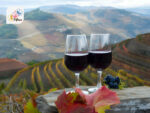
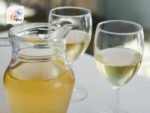
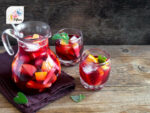


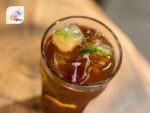
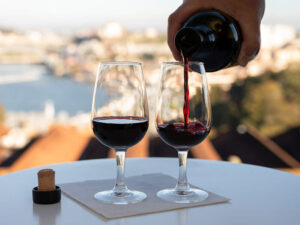
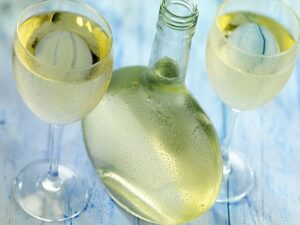
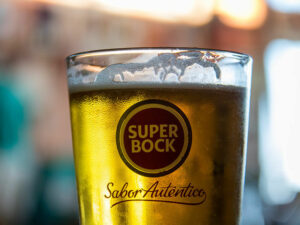
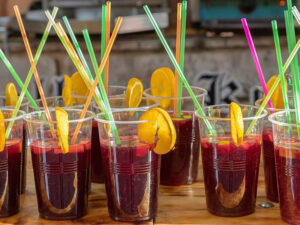
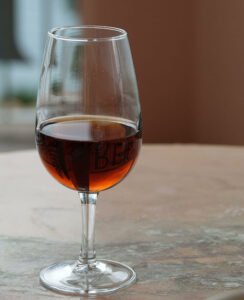
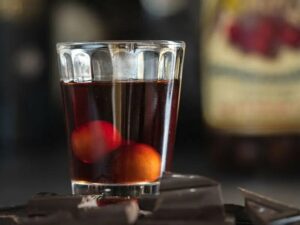
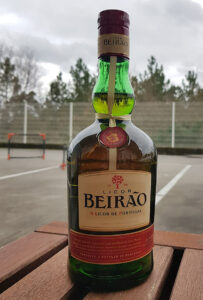
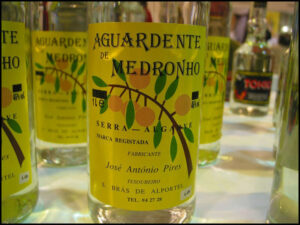
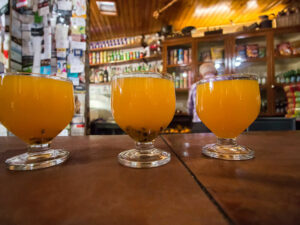
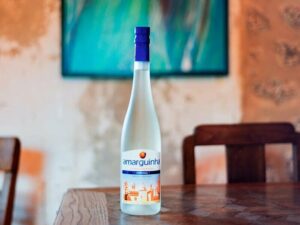

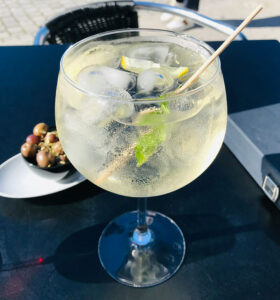
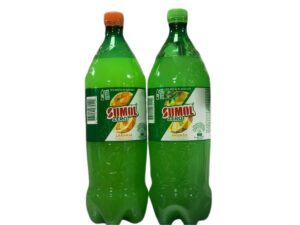

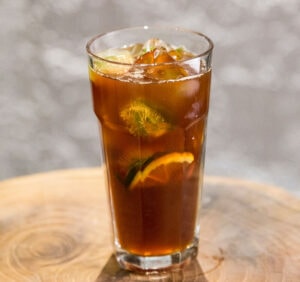
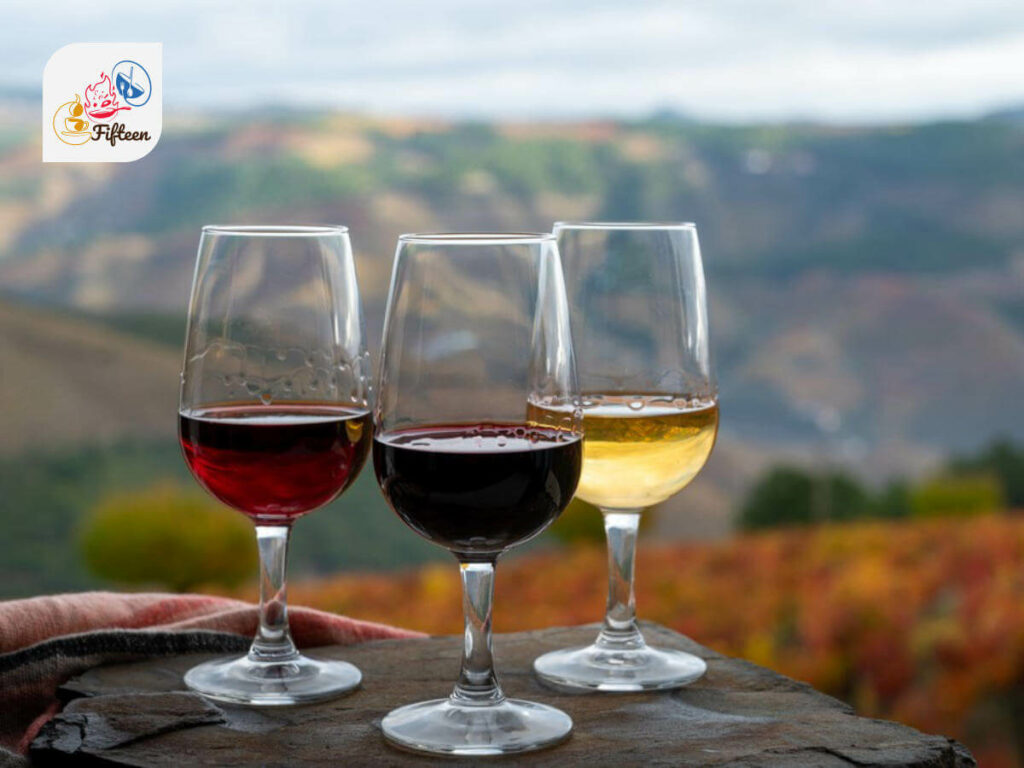

Jamie Scott
Editor in Chief, Senior Content Writer
Expertise
Home Cooking, Meal Planning, Recipe Development, Baking and Pastry, Food Editor, Cooking-video Maker, Western Food Evaluation Expert
Education
Le Cordon Bleu College of Culinary Arts
Local Community College, New York, NY
Jamie Scott is a skilled culinary expert and content creator specializing in Western cuisine. With over 15 years in the culinary field and formal training from Le Cordon Bleu, Paris, Jamie deeply understands how to blend nutrition with delicious flavors. His passion for cooking matches his commitment to making healthy eating accessible and enjoyable.
On Fifteen.net, Jamie brings a fresh perspective to classic dishes and beverages, offering readers insightful recipes, cooking tips, and a fresh view on meal planning that emphasizes taste, health, and simplicity.